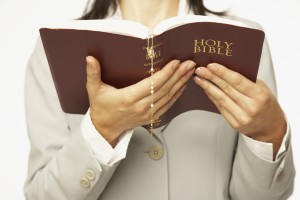
In May, the Vatican made a splash in the news when the Pope agreed to explore the idea of ordaining women as deacons in the church. A few days after the announcement, another statement was issued to reiterate the fact that Pope Francis had simply agreed to explore the question of women in the church, not whether they could actually be ordained. After years of keeping women in administrative roles in the Catholic Church, the Pope’s willingness to explore the issue is very important. Still, it could take years to actually change the canon. Opening the debate is a vital step.
While the Pope was making headlines, a study from the Pew Research Center was released about attendance at worship services and how the trends are changing when it comes to gender. It’s no secret that church attendance is dwindling, as more Americans call themselves “none” than ever before. What could be surprising is that the largest decline in attendance is women.
Understanding the Data
In 1972, about 36 percent of women attended religious services once a week, while only about 26 percent of men did. In 1982, the gap widened from 10 to 13 percent. The percentage of women increased to 38 percent, while the men’s percentage decreased to 25 percent. Then, the gap began to shrink.
Weekly attendance at religious services have declined for all Americans. Today, the gap between the genders is much smaller, at six points, with 28 percent of women and 22 percent of men reporting that they attend a weekly religious service. What’s going on with these figures?
Theories to Explain the Decreasing Gender Gap
There have been some theories to explain why women are leaving the church more than men. One theory suggests that it’s due to changes in the labor force. In the early 1970s, only about 30 percent of women worked full-time. Today, that figure has increased to just over 50 percent. The fastest increase in women’s employment was during the late 1970s and early 1980s when the gap actually widened. Thus, the science doesn’t fit.
Another theory is about the educational levels of women. More women have attended college in recent years, which is another reason that is thought to result in people leaving the church. Again, the science doesn’t hold up, because both college-educated and those with less-than-college education attend religious services at similar rates. Both groups have experienced declines in recent years.
Another theory, which does have promise, is the rate of growth in those unaffiliated with religion, or the nones. Men are much more likely to be religiously unaffiliated, but more women are coming around to this point of view. This could be one factor in the decline of religious service attendance.
The Pew Research Center suggests that it isn’t anything that women are or aren’t doing. Researchers believe that the gender gap may be in religiously affiliated men. Today, men are much more likely to attend religious services on a weekly basis.
Women May Be Taking a Stand
What the research does show is that the atmosphere in religious services is changing. More research is required, but there could be a dissatisfaction in the church with it’s stance on women’s issues that correlates to the decline of women’s attendance. The rate of women’s attendance in the church dropped significantly around 1984, when the Catholic Church was questioning Geraldine Ferraro for being pro-choice as she was running for vice president. Another decline was in the period from 2004 to 2012, when birth control was a big issue in the evangelical church.
The church has come a long way in their treatment of women, but there’s still a lot of ground to make up. Religious leaders need to examine the role of women in the church if they want to bring them back.

